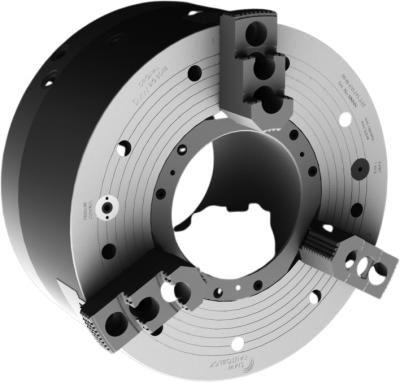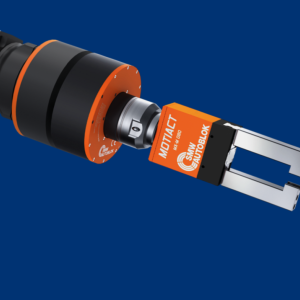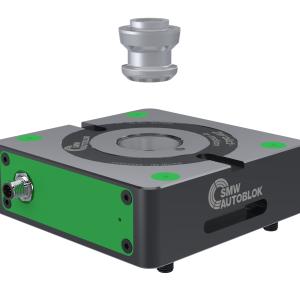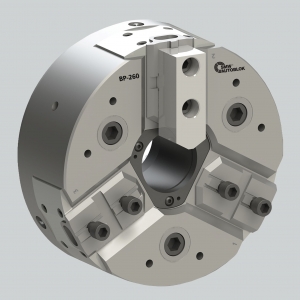Contact Details

SMW Autoblok, a world leader in the design and manufacture of rotational chucks, stationary workholding, tooling,and custom engineered solutions for the machine tool industry,presents the BIG BORE® (BB-N-ES) pneumatic air chuck featuring both rapid and clamping stroke for short clamping cyclesand use of full spindle bore for large pipe.
BIG BORE is the first chuck developed for end machining of long pipe and full utilization of the spindles through hole. These aremade possible by two principles invented by SMW Autoblok including air supply through a distributor ring and SMW-profile seal rings. Built-in non-return valves maintain air pressure during machining and the clamping pressure is constantly check by a safety control system.
Ideal for handling the harsh demands of the Oil and Gas industry, Big Bore and all of its variations is ideal for machining straight pipe, bent pipe and threading of couplings in two setups. This revolutionary chuck also offers extended jaw stroke for greater clearance to ensure safety for the and loading and unloading of the many variations found in oil field pipe.
BIG BORE is available in 400 mm to 1000 mm and features large through holes of 140 to 560 mm.
Related Glossary Terms
- chuck
chuck
Workholding device that affixes to a mill, lathe or drill-press spindle. It holds a tool or workpiece by one end, allowing it to be rotated. May also be fitted to the machine table to hold a workpiece. Two or more adjustable jaws actually hold the tool or part. May be actuated manually, pneumatically, hydraulically or electrically. See collet.
- clearance
clearance
Space provided behind a tool’s land or relief to prevent rubbing and subsequent premature deterioration of the tool. See land; relief.
- threading
threading
Process of both external (e.g., thread milling) and internal (e.g., tapping, thread milling) cutting, turning and rolling of threads into particular material. Standardized specifications are available to determine the desired results of the threading process. Numerous thread-series designations are written for specific applications. Threading often is performed on a lathe. Specifications such as thread height are critical in determining the strength of the threads. The material used is taken into consideration in determining the expected results of any particular application for that threaded piece. In external threading, a calculated depth is required as well as a particular angle to the cut. To perform internal threading, the exact diameter to bore the hole is critical before threading. The threads are distinguished from one another by the amount of tolerance and/or allowance that is specified. See turning.











 PRODUCTS
PRODUCTS

